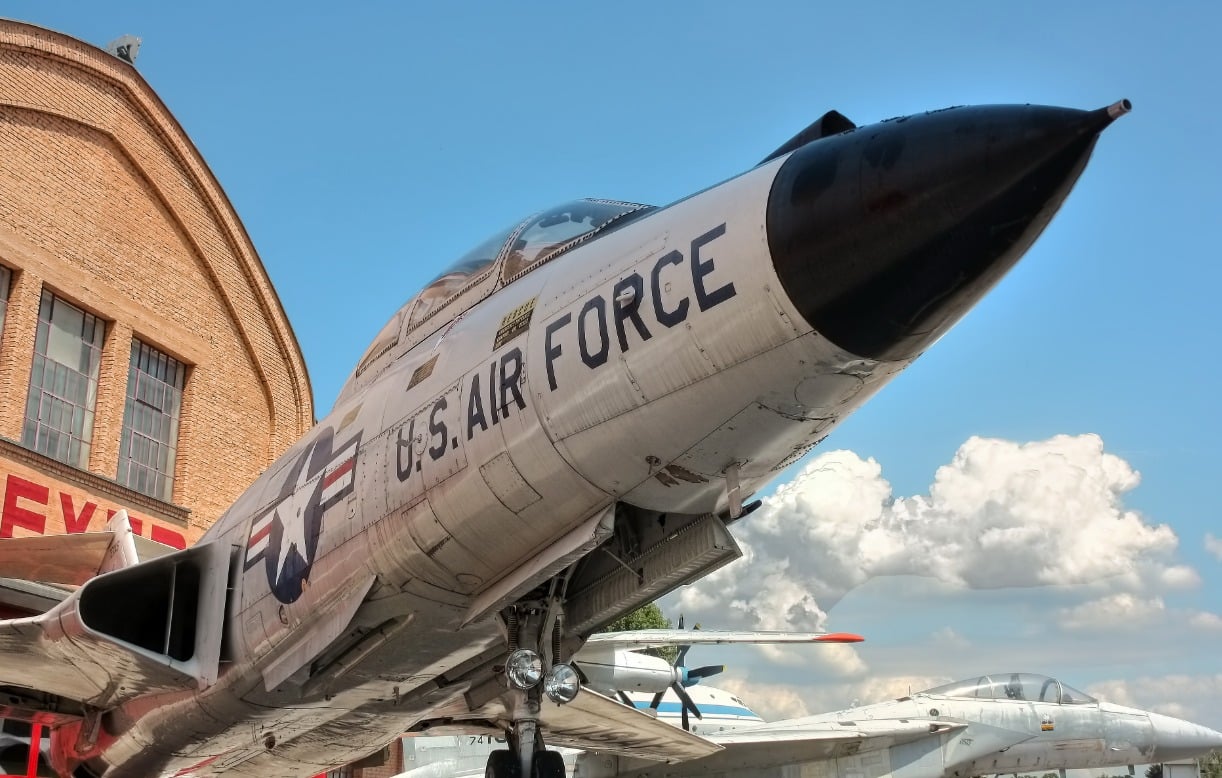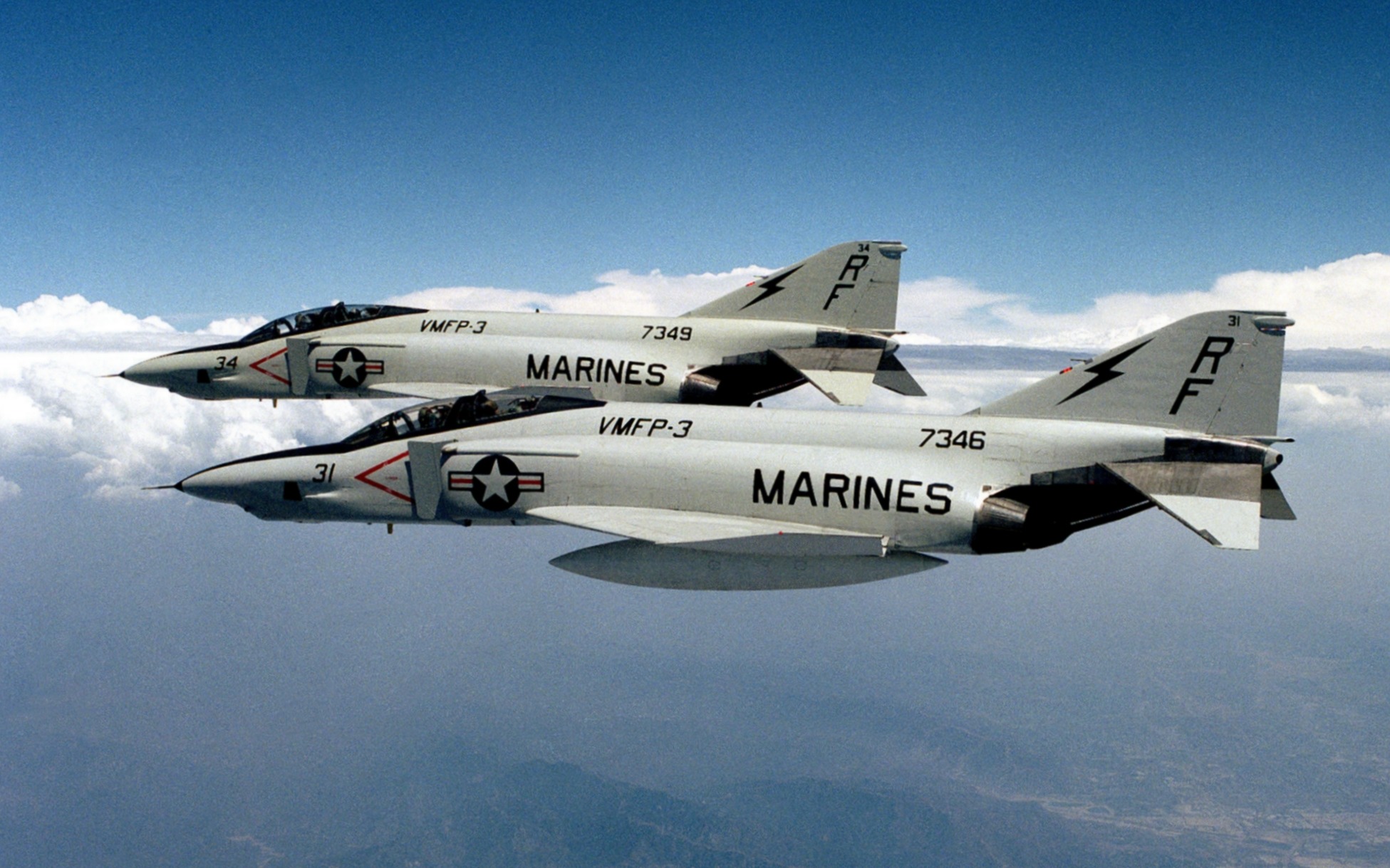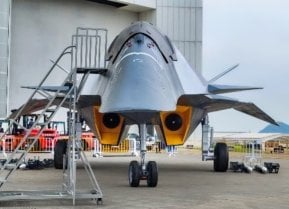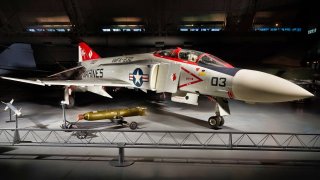F-4 Phantom Fighter Explained in 5 Words
The McDonnell Douglas F-4 Phantom II was a highly versatile and successful third-generation fighter jet used extensively by the U.S. military during the Vietnam War. Originally designed as an interceptor for the U.S. Navy, it was later adopted by the Air Force and Marine Corps, becoming a primary warplane across services.
Warrior of the Vietnam War: The McDonnell Douglas F-4 Phantom II was a highly versatile and successful third-generation fighter jet used extensively by the U.S. military during the Vietnam War. Originally designed as an interceptor for the U.S. Navy, it was later adopted by the Air Force and Marine Corps, becoming a primary warplane across services.

-Renowned for its speed—exceeding Mach 2—and advanced radar systems, the Phantom excelled in air-to-air combat against North Vietnamese MiGs. Initially lacking an internal gun, it was later equipped with a 20mm M61 Vulcan cannon to enhance dogfighting capabilities.
-The F-4 also served effectively in ground-attack roles but faced challenges from Soviet-built anti-aircraft systems like the SA-2 Guideline. Despite these obstacles, the Phantom proved its resilience and remained in service for decades, with countries like Iran still operating the aircraft today.
F-4 Phantom II: The Legendary Fighter Jet That Dominated Vietnam
America’s F-4 Phantom II was the best third-generation platform ever built. A product of McDonnell-Douglas, this Cold War icon played a key role throughout America’s war in Vietnam. The bird was far from perfect, but its greatness outstripped its drawbacks.
Originally conceived as an interceptor fighter for the U.S. Navy, the Phantom performed so well that soon enough the rest of the military wanted it. The Air Force and Marine Corps purchased their own variants of the F-4 Phantom II, making it the primary warplane for the U.S. military during its service life.

The F-4 was widely commended for its speed, the reliability of its twin engines, and its advanced radar system. Indeed, the Phantom could soar to speeds beyond Mach 2, or more than 1,500 miles per hour.
Not bad for an old-timer.
A History of Violence
The F-4 flew its first combat missions for the Navy over the unfriendly skies of Vietnam in 1964. A year later, the Air Force deployed its variant of the F-4. People forget that the North Vietnamese had a small but relatively proficient air force, courtesy of their Soviet backers. The Americans knew they had to knock their enemy’s Soviet-made MiGs out of the sky to achieve air dominance.
There was only one bird that could achieve this risky aim: the Phantom. Initially, Phantoms went hard against the North Vietnamese air force, engaging in dangerous air-to-air combat missions in which the F-4 quickly established its dominion. The advanced radars of the F-4 Phantom fleet, coupled with their AIM-7 Sparrow and AIM-9 Sidewinder missiles, gave the F-4 combat superiority.
In air-to-air engagements with the North Vietnamese, Phantom pilots were usually better trained and had more sophisticated technology at their disposal when compared with the rag-tag air force of the North Vietnamese. That’s not to say that the North Vietnamese were an unworthy adversary. They were quite a worthy enemy. But in straight-up engagements, usually the F-4s had the advantage. Because of that, the Phantom achieved significant success.
As noted above, though, these birds were not without their drawbacks.

The initial air-to-air missions against the North Vietnamese air force showed the F-4 Phantoms had some early kinks to work out. For example, at the start of the Vietnam War, these birds were not equipped with an internal gun. Its designers believed the F-4 would just be a missile truck.
But the North Vietnamese fought dirty, both on land and in the air – the Phantoms often found themselves fighting in airspace far too crowded for missiles. The military therefore chose to upgrade these birds to include 20 mm M61 Vulcan cannons, believing they needed reliable close-in dogfighting capabilities.
Their Use in Ground Attack Operations
The F-4’s usefulness did not end with air-to-air combat.
Indeed, the Phantoms were prolific ground attack birds. They dropped bombs and napalm, and they blasted targets below with rockets. These birds could carry a heavy payload, and they were truly the workhorses of the war. Sadly, that also made them bullet and missile magnets for anti-aircraft systems that were hidden in the jungle canopy below.
Specifically, the Soviet-built SA-2 Guideline appeared to have been built to knock F-4 Phantoms from the sky. The F-4 had a very high casualty rate during the Vietnam War. It was a reminder to U.S. war planners how problematic any conflict with the Soviet Union would be, if the Cold War ever turned hot. As advanced and successful as the F-4 Phantom II was in combat, flying over enemy airspace that’s defended by reliable anti-aircraft systems is a problem.

Early in the war, the Americans employed tactics that were misaligned with the combat environment. This tends to happen in conflict. You fight the last war at the beginning of the next.
Phantom pilots adapted to conditions quickly. The addition of that 20 mm M61 Vulcan cannon was just what the doctor ordered. Beyond that, American pilots needed to retrain and essentially return to basic fighter warfare. (This led to the establishment of the Navy’s TOPGUN school.)
But there were more complications derived from the environment for these amazing planes. Anyone who has ever lived in Florida understands that humidity is the destroyer of machines. Vietnam was no different.
The harsh, tropical environment coupled with the ceaseless intensity of the conflict meant these birds experienced relentless wear and tear. Maintenance was crucial because many Phantoms required such serious repairs that they risked being lost not to enemy fire, but to mechanical failures.

War as an Innovation Force
War is the mother of all invention. The North Vietnamese received many Soviet and Chinese pieces of equipment that aided in their “colonial struggle” against the Americans. In the crucible of war, however, they radically advanced many of these systems.
So, the F-4’s radar was advanced, and its electronic countermeasures were sophisticated. Yet the North Vietnamese were outpacing the Americans in terms of anti-aircraft systems, leading to wanton destruction of F-4s in combat.
Still, the F-4 Phantom proved itself time after time in Vietnam. It remained one of the most popular third-generation warplanes for decades thereafter, with Iran still flying its fleet of U.S.-built Phantoms today.
Author Experience and Expertise: Brandon J. Weichert
Brandon J. Weichert, a National Interest national security analyst, is a former Congressional staffer and geopolitical analyst who is a contributor at The Washington Times, the Asia Times, and The-Pipeline. He is the author of Winning Space: How America Remains a Superpower, Biohacked: China’s Race to Control Life, and The Shadow War: Iran’s Quest for Supremacy. His next book, A Disaster of Our Own Making: How the West Lost Ukraine, is due October 22 from Encounter Books. Weichert can be followed via Twitter @WeTheBrandon.
All images are Creative Commons or Shutterstock. All photos are of various submarine styles.
From the Vault
Russia Freaked Out: Why the U.S. Navy 'Unretired' the Iowa-Class Battleships
Battleship vs. Battlecruiser: Iowa-Class vs. Russia's Kirov-Class (Who Wins?)


